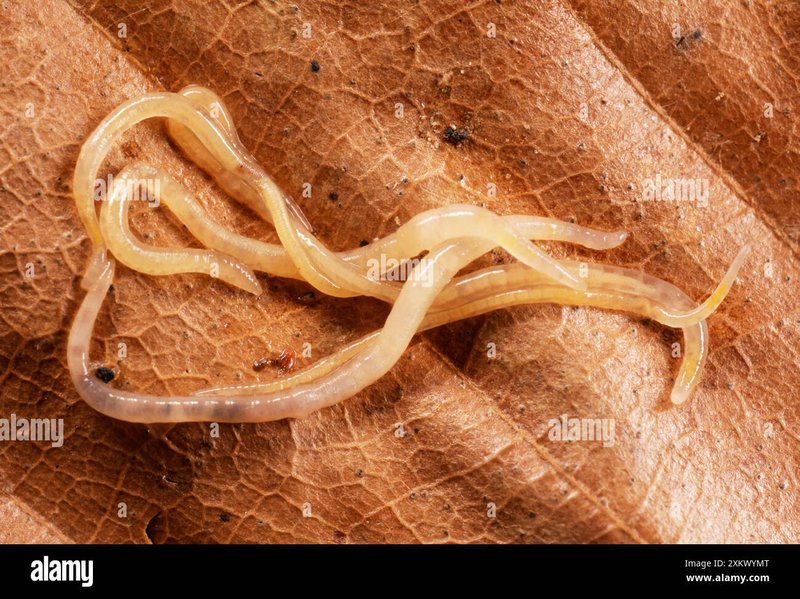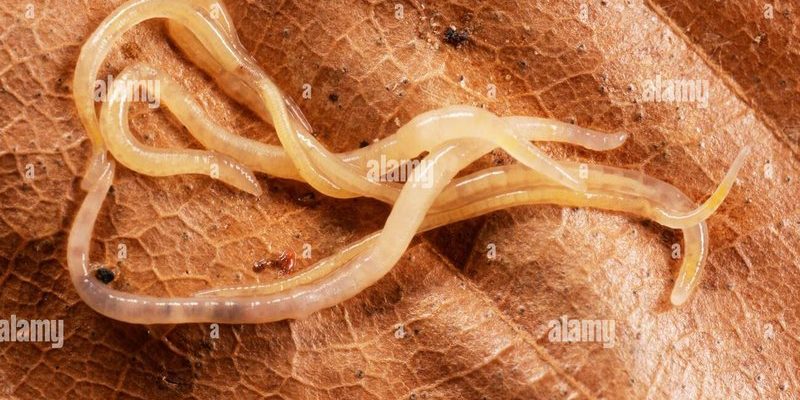
Enchytraeids, also known as “pot worms,” play a crucial role in breaking down organic matter and enriching the soil. By learning to identify them, you not only connect with nature but also gain insights into the health of the ecosystem around you. In this guide, I’ll walk you through some straightforward steps to help you find and recognize these creatures right where they live.
What Are Enchytraeids?
Let’s start with the basics. Enchytraeids are small, segmented worms that belong to the class Clitelata. They typically range from 1 to 10 centimeters in length and have a pale, creamy appearance. Unlike some other types of worms, they live in moist, organic-rich soil, especially in a variety of environments, including gardens, forests, and grasslands.
You might be wondering why they matter. Well, enchytraeids are essential for soil health. They help break down dead plant material, which enriches the soil and supports plant growth. This makes them an important part of the food web, serving as a meal for birds and other predators. Knowing how to identify them can give you a better understanding of your local ecosystem.
Where to Look for Enchytraeids
Now that you have a general idea of what enchytraeids are, where can you find them? The best spots are rich, moist areas such as:
- Garden beds: These are often teeming with organic matter, making them perfect homes for enchytraeids.
- Forest floors: Leaf litter and decaying wood create a wonderful habitat.
- Compost heaps: The decomposition process here attracts a variety of soil organisms.
When you’re ready to search, just grab a small trowel or even just your hands and dig a few centimeters into the soil. Look for dark, crumbly earth where organic material has broken down. This is where enchytraeids thrive!
Physical Characteristics: Spotting Enchytraeids
To identify enchytraeids in their natural habitat, you’ll want to pay attention to their physical characteristics. Here’s what to look for:
– Size and Shape: Most enchytraeids are slender and elongated, with a smooth body. They can be anywhere from a few millimeters to a few centimeters long.
– Color: Generally, they are whitish or pale in color. Sometimes they may appear slightly yellowish, especially after consuming organic matter.
– Segments: Enchytraeids are segmented, and each segment may have tiny bristles, making them look like tiny earthworms.
Observing these traits can help you distinguish them from similar organisms, like earthworms or nematodes. Remember, it might take a keen eye, but once you know what to look for, you’ll be amazed at how easily these creatures reveal themselves.
Gathering Enchytraeids for Closer Observation
If you’re curious and want to take a closer look, you can do so by carefully collecting some soil. Here’s how to do it without harming the environment:
1. Choose a Suitable Spot: Pick an area with ample organic matter. A garden or compost pile works great.
2. Collect Soil: Use a trowel to scoop up a small amount of soil—about a cup’s worth should be enough.
3. Place in a Container: Put the soil in a clear container, like a jar or a plastic tub. This will help you see better.
4. Add Water: Lightly moisten the soil with some water. This will keep the enchytraeids active and help you spot them more easily.
After a little while, you’ll likely see them wriggling to the surface. That’s the wonder of observing nature up close!
Common Mistakes When Identifying Enchytraeids
As you dive into identifying enchytraeids, here are some common pitfalls to watch out for:
– Confusing with Earthworms: While both enchytraeids and earthworms are segmented, earthworms are generally larger and tend to have a darker color. They live deeper in the soil compared to enchytraeids, which prefer the top layers rich in organic material.
– Overlooking Habitat: Sometimes, people forget that enchytraeids thrive in moist environments. If it’s too dry, you might not find them. So, check those humid spots!
– Missing Their Size: Enchytraeids are small, so it can be easy to overlook them. Take your time and look closely at the soil.
By keeping these things in mind, you’ll boost your chances of spotting these fascinating organisms in their natural habitat.
Why Identifying Enchytraeids Matters
You might be asking, “Why should I even care about spotting enchytraeids?” Well, identifying these tiny worms can actually give you a lot of insight into your local ecosystem. Here’s why it matters:
– Soil Health Indicator: Enchytraeids are a good sign of healthy soil. A thriving population means your soil is rich in organic matter and nutrients, which is crucial for plant growth.
– Biodiversity: Observing enchytraeids contributes to understanding biodiversity in your area. The presence of these worms indicates a balanced ecosystem, which benefits many other organisms.
– Involvement in Ecosystem: When you learn about enchytraeids, you’re connecting with the broader picture of how ecosystems function. It’s a way to appreciate the intricate relationships between different species in nature.
So, the next time you’re out exploring, remember that these little creatures hold a big key to understanding the environment around you.
Identifying enchytraeids out in their natural habitat can be an exciting adventure. Whether you’re digging into your garden or exploring the woods, these tiny worms serve as fantastic indicators of soil health and ecosystem vitality. So grab your trowel, get your hands dirty, and enjoy the wonders of nature!
As you become more familiar with enchytraeids, you’ll likely find yourself looking at your surroundings with a new level of curiosity. Nature is filled with countless stories waiting to be uncovered—each little creature has its part to play. So go ahead and embrace the exploration. Happy digging!

